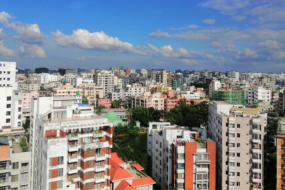Retail real estate gained momentum in 2022 with an estimated completion of 2.5 million sq ft of mall supply. Going forward, this momentum is expected to continue with nearly 60 shopping malls encompassing a total retail space of 23.25 million sq. ft expected to become operational during 2023-25 across the top seven cities of India
According to JLL the retail real estate saw leasing momentum recover in March 2022 on the back of an increase in footfall, sales, and rent concessions being discontinued. Mall supply of around 2.5 million sq. ft was estimated to be completed in 2022, ’
In 2023 mall supply of around 10 million sq. ft is expected to get operational with 25 new malls entering the market across the top seven cities of India (Delhi NCR, Bangalore, Hyderabad, Mumbai, Pune, and Kolkata). Leasing demand for sectors such as F&B, electronics, jewelry, athleisure, casual clothing, formal wear, accessories, and beauty and cosmetics is increasing. With the introduction of new entertainment categories programming and the total removal of all Covid-related limitations, the entertainment category, including multiplexes, enjoyed a robust comeback in business beginning in March 2022.
With improving resilience, there has been an emergence of newer formats by retailers. There has been a churning of brands and categories in existing shopping malls to help keep up with changing customer demands and accommodate newer global businesses.
Omni-channel retailing becoming an integral part of retail strategy
- Integration of physical and digital experience is taking place to provide an interactive and all-inclusive in-store experience. Retailers are upgrading their brand websites and launching shopping apps to offer a digital experience to customers along with physical stores.
Increasing institutional investment in retail
- Institutional investment in the retail sector has been picking up. With quality supply in the pipeline and new malls announced by established developers, the Indian retail sector is expected to attract more institutional investment.
Vacancy polarization in superior versus average malls
- The demand for superior Grade shopping malls is quite high in India as retailers have a strong appetite for prime retail spaces that have high footfalls. Therefore, vacancy in such malls is lower at single digit compared to ‘good’ and ‘average’ malls. This trend is expected to continue as both retailers and consumers prefer such malls.
Evolving consumer needs, increasing allocation to F&B, and redefining customer experience
- F&B space allocation in some shopping malls has increased from 12-15% before the pre- Covid period to 25-30% now. It is expected to remain an integral part of any mall development. Mall developers and retailers are taking persistent initiatives to enhance customer experience through technology upgradation and innovations.
Growing number of global brands
- Global retailers, including popular F&B chains, are entering India, seeing its strong fundamentals and consumption growth. Indian shopping malls are also churning their brand mix to accommodate global marquee brands.
Going forward, nearly five dozen new shopping malls with a total retail space of 23-25 million sq ft are expected to become operational over the next three years across the top seven cities. Delhi-NCR and Bengaluru will be the major contributors with a 53% share in the upcoming supply.



